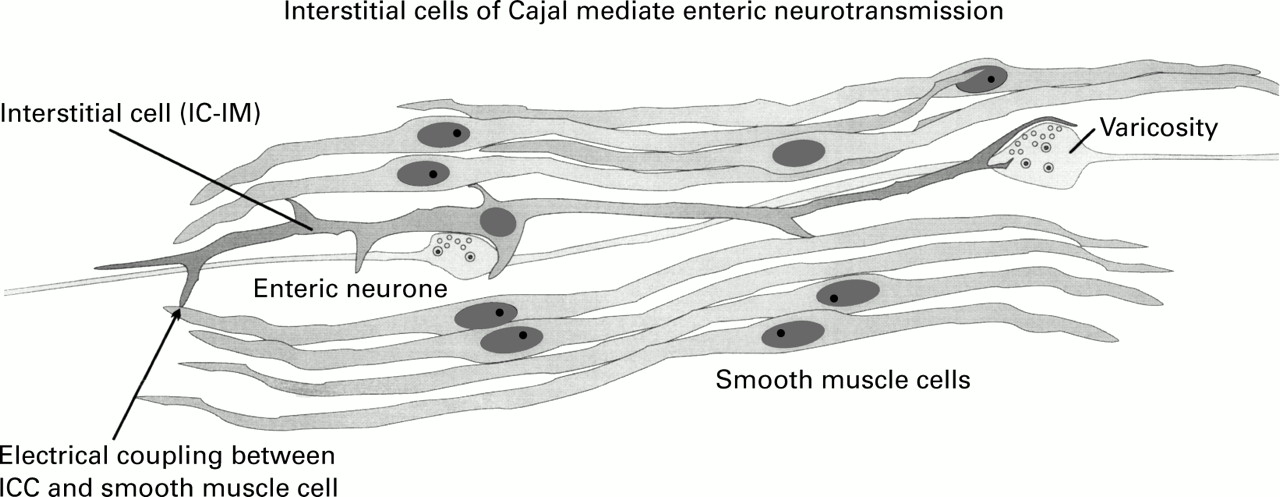- Joined
- Feb 5, 2011
- Messages
- 380
- Reaction score
- 7
Cajal cells or stomach stretch receptors?

In the gastrointestinal tract, phasic contractions are caused by electrical activity termed slow waves. Slow waves are generated and actively propagated by interstitial cells of Cajal (ICC). The initiation of pacemaker activity in the ICC is caused by release of Ca2+ from inositol 1,4,5-trisphosphate (IP3) receptor-operated stores, uptake of Ca2+ into mitochondria, and the development of unitary currents. Summation of unitary currents causes depolarization and activation of a dihydropyridine-resistant Ca2+ conductance that entrains pacemaker activity in a network of ICC, resulting in the active propagation of slow waves. Slow wave frequency is regulated by a variety of physiological agonists and conditions, and shifts in pacemaker dominance can occur in response to both neural and nonneural inputs. Loss of ICC in many human motility disorders suggests exciting new hypotheses for the etiology of these disorders.
Well, stretch definitely leads to contraction. By vagus and myenteric reflexes. When I learned about Cajal cells via Guyton, the distinction was also made pretty clear that Cajal cells don't in and of themselves lead to contraction. They are mainly responsible for the slow wave (baseline) voltage.Thanks guys. So if you get a question like that, without having muscles choice, which one will you pick? The point that makes me confused, BRS and UW frankly differentiate between slow waves (induced by Cajal cells?) and actual contraction
